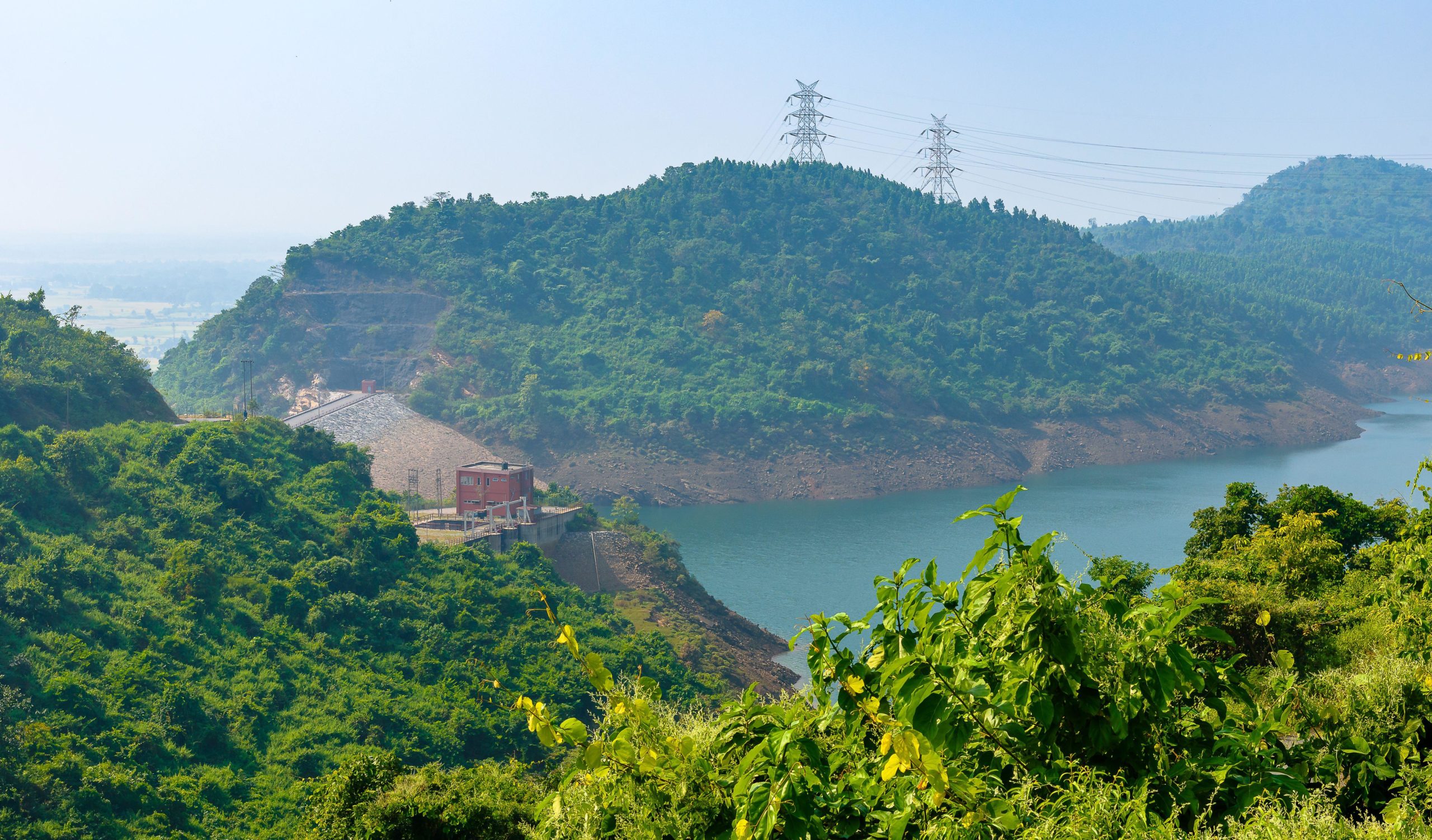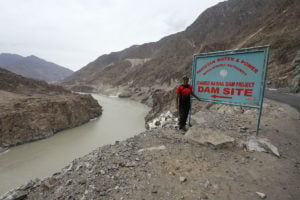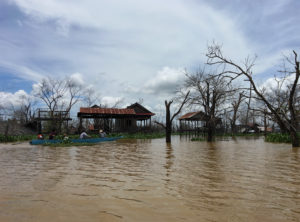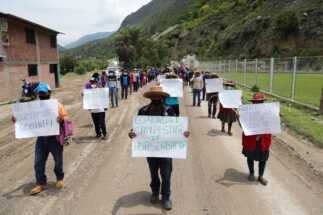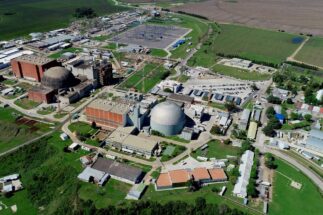Indigenous residents of the Ayodhya Hills in India’s West Bengal state fear the loss of their livelihoods after a 1,000-megawatt hydropower project was given the green light by a division bench of the Calcutta High Court.
The December 2021 judgment allows the West Bengal State Electricity Distribution Company Limited (WBSEDCL) to move ahead with construction of the Turga Pumped Storage Project, after completing settlement of land rights. The project is set to be built in the Baghmundi area of the Ayodhya Hills, part of the Chhotanagpur Plateau, a region of forested hills on the West Bengal-Jharkhand border in eastern India.
The reservoirs behind the two dams to be built are expected to submerge 292 hectares of land, including farms and pastures. According to the Environmental Impact Assessment report for the project, released in 2016, this area comprises 234 hectares that belongs to the forest department and 58 hectares currently owned by the revenue department or by individuals.
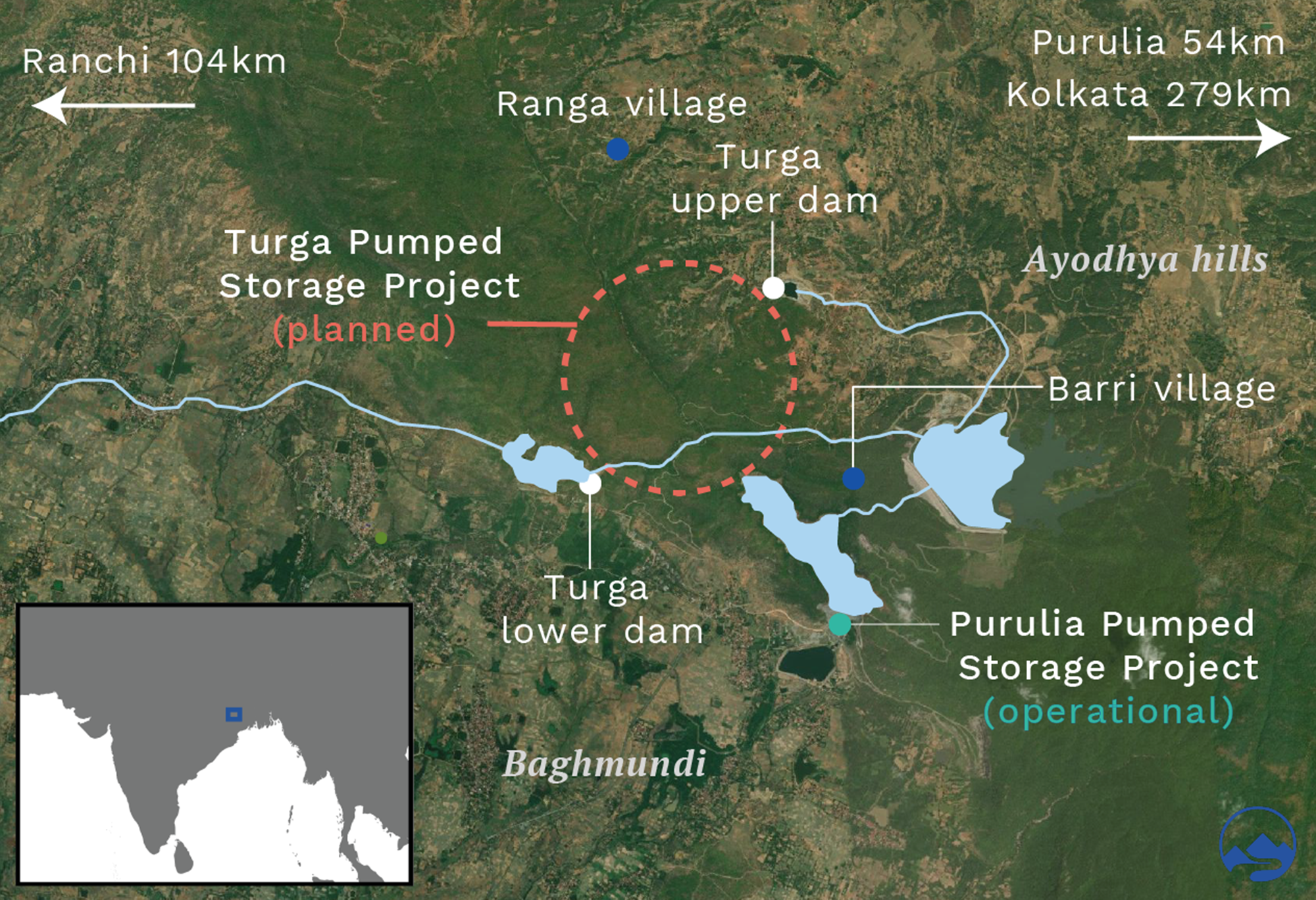
The WBSEDCL website says that the project is necessary “to meet up the evening peak [electricity] shortfall of the state after 2022” (as coal plants cannot be ramped up quickly to meet variable demand). But the project has alarmed the local population, comprising 36 villages of the Ayodhya and Baghmundi area. The majority of residents are from indigenous communities. Villagers have been protesting the project since 2017, citing the loss of pastureland and forests.
The project could also lead to water shortages further downhill, according to Soumendu Chatterjee, professor of geography at Presidency University in Kolkata.
A pumped storage plant is a reversible hydropower facility that is designed to generate power when demand is high. Its main objective is not power generation but to stabilise the electricity grid. It has two reservoirs at different elevations. “When the power demand is low, a pumped storage plant uses [excess] electricity to pump up water from the lower to the upper reservoir. When the electricity requirement becomes high, the water in the upper reservoir is let down to drive turbines and generate electricity,” explains Shripad Dharmadhikary of the think tank Manthan Adhyayan Kendra.
Chequered history of the Turga Pumped Storage Project
First mooted in the 1980s, the Turga Pumped Storage Project was initially given the go-ahead by the West Bengal government in May 2017. It was stalled by a July 2019 judgement by a single judge bench in Calcutta High Court, which raised concerns that acquisition of land for the project was in violation of the 2006 Forest Rights Act (FRA). The FRA mandates that written consent must be obtained from locals for forest and environmental clearance before any project can be started.
According to a 2017 document from the office of the Purulia District Magistrate, WBSEDCL had obtained only 21 consent signatures from a population of over 31,000 living in the 36 villages.
The West Bengal government appealed against the order in July 2019, and a larger bench of the Calcutta High Court upheld this appeal in December 2021, saying the project would “generate permanent/regular employment for 169 persons and temporary employment for 18,90,000 persons”. The bench concluded by “setting aside” the earlier judgement. It said the earlier judgement had “subverted” the “topographical, social, economic and natural facts” around the project. The division bench defined what could be called a ‘gram sabha’ (village council) according to the Forest Rights Act of 2006, and the West Bengal Panchayat Act of 1973 as well, before saying that “the issue of consent of the Gram Sabhas is still open for scrutiny” by a central government authority.
Residents plan to go to court again over Turga project
Residents of the 36 villages set to be impacted by the project have formed a group called Prakriti Banchao O Adibasi Banchao Mancha (Forum to Save Nature and Indigenous Peoples) in collaboration with environmental activists. They plan to challenge the high court decision in India’s Supreme Court.
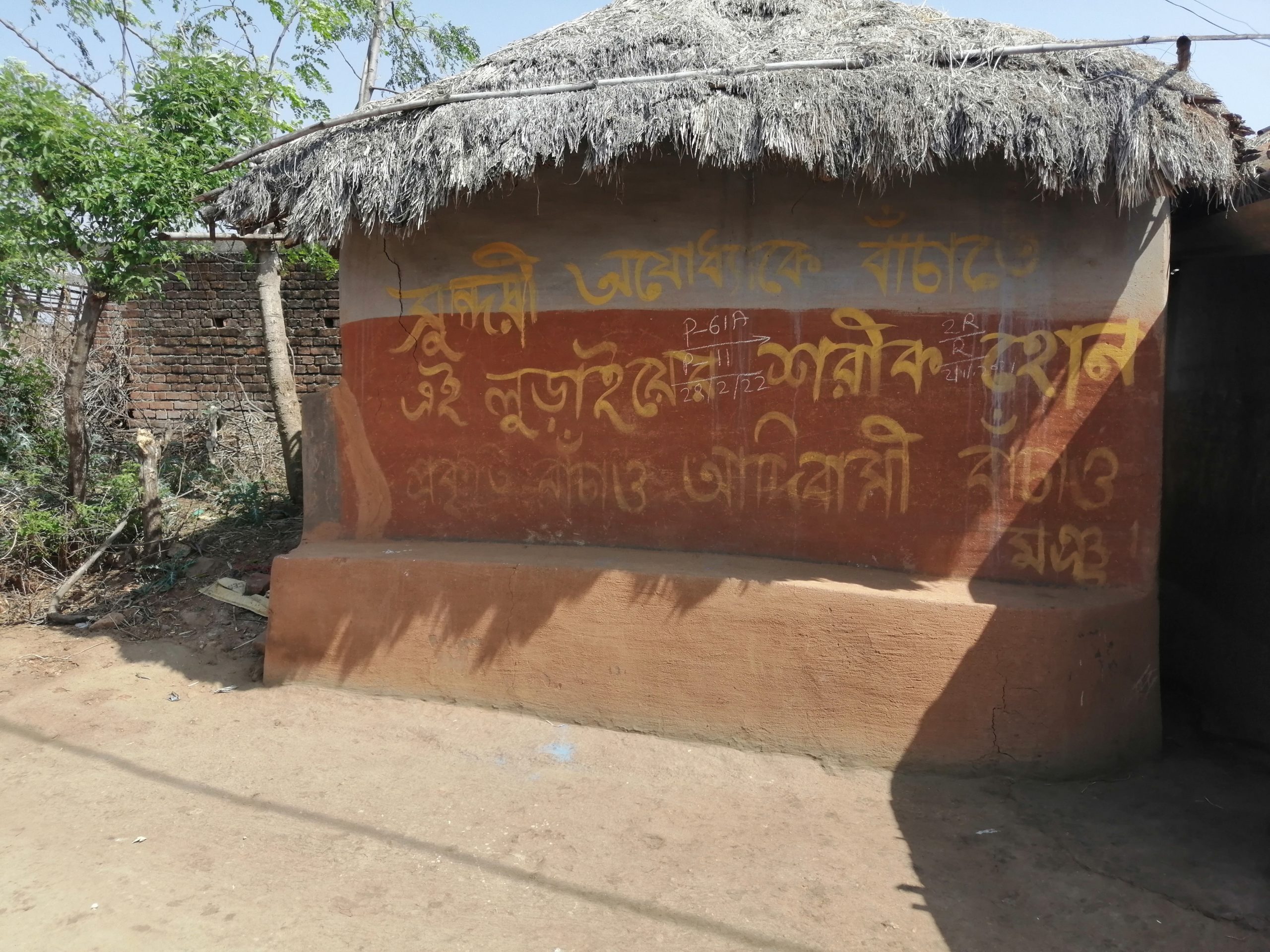
Gulan Murmu, a member of the forum, alleges that over 300,000 trees would be felled for the proposed Turga project. “More than 500 families are going to be affected, either directly or indirectly. Nature will suffer the most,” Murmu tells The Third Pole. He emphasises how local people, mostly forest-dwelling indigenous communities, depend heavily on the forests for collection of honey, flowers and other products to sustain their livelihoods, for medicinal plants, and for bamboo and dry branches to build their homes. The forest is also used to graze livestock and gather fuelwood.
The West Bengal government has been planning since the 1980s to build four pumped power storage plants in the Ayodhya Hills. The Turga project is the second in the series, after the Purulia Pumped Storage Project (PPSP), a 900 MW pumped hydro project in the same district which was completed in 2007. That project resulted in the flooding of 442 hectares of land.
The state government has taken a loan of 29,442 million Japanese yen (USD 240.3 million) from the Japanese government’s main overseas development agency, Japan International Cooperation Agency, for the Turga project.
Broken promises lead to mistrust
“This is a question of our survival,” says Murmu. “This destruction of ecology in the name of development cannot continue. So much of our land has gone under water for PPSP. We cannot let that happen again.”
Memories of the benefits promised before the PPSP development loom large among the residents who fear displacement due to the Turga project.
Chhobi Tudu, a resident of Ranga Barelhor village in Ayodhya gram panchayat, tells The Third Pole, “During PPSP, they [WBSEDCL and government officials] had promised that we would get free electricity and work in the power plant. After it was built, only three persons from our villages were hired as security guards. They are saying similar things again [regarding the Turga project].”
The 2014 application for forest clearance permission from the developer behind the Turga project claimed that it would likely give permanent work to 169 people and generate 1.89 million ‘person-days’ of employment for temporary workers.
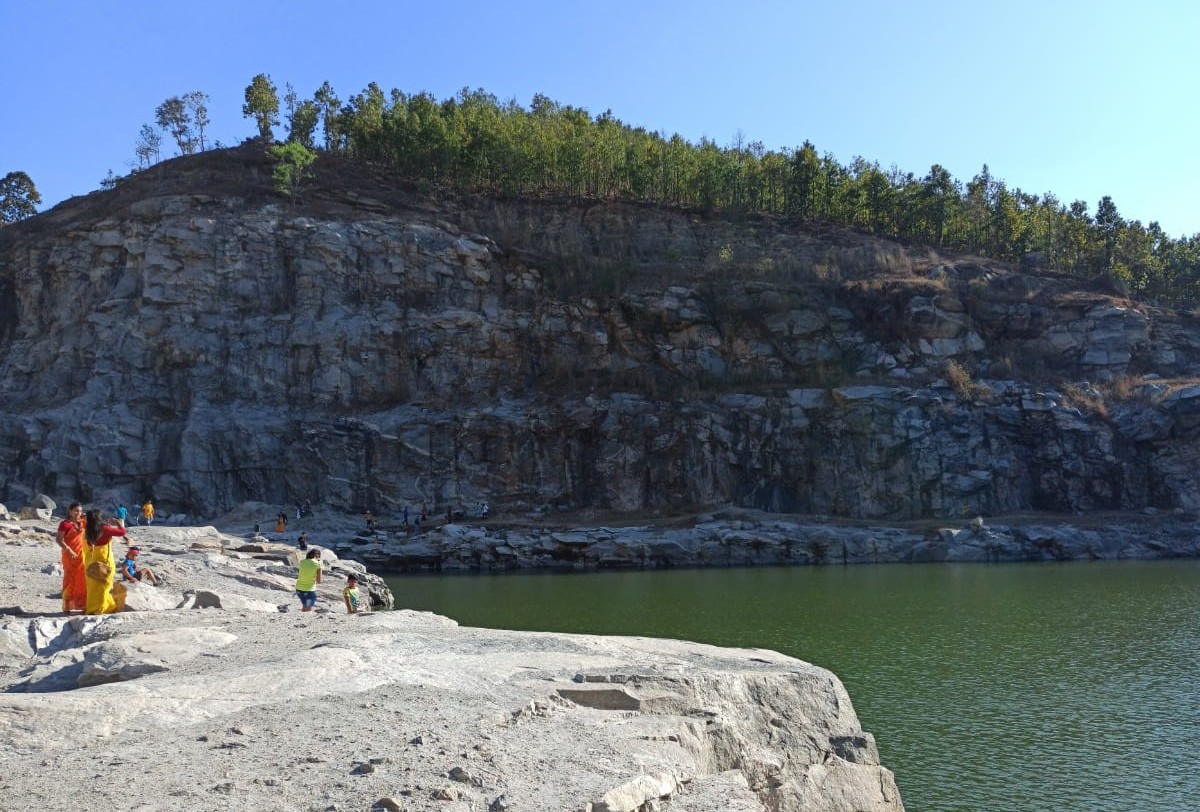
“We have learned our lesson from PPSP. Forget jobs, we will not even take money if they agree to pay us compensation,” says Tudu, a mother of five. “We will not give our forest land at any cost.” She claims her family farm will be submerged if the Turga project is built.
Tudu’s neighbour Kaliram says: “Water will come to our doorstep. Where will I take my cattle, pigs and sheep for grazing? PPSP was an eye-opener. So many people lost land and received nothing in return.”
Asked to respond to the residents’ allegations that the state government did not act in accordance with the law before acquiring environment and forest clearance for the project, a local official who declined to be identified told The Third Pole: “Gram sabhas can be done in two ways before undertaking a project such as this – by following the Panchayat Act or under the FRA. The central government has also, I think, given approval that there is nothing wrong with the Panchayat Act’s gram sabha. I can only say that concerned authorities had prepared EIA [environmental impact assessment] report after conducting gram sabhas… If there was anything illegal the high court division bench wouldn’t have overturned the single bench’s decision. When the high court has said that the state government has done nothing wrong, how can I say anything else?”
Experts question economic gains of pumped hydro projects
Experts familiar with West Bengal’s pumped hydro projects question whether the Turga project will bring the benefits promised. In a 2010 paper on the Purulia Pumped Storage Project, Abhishek Chakraborty of Vidyasagar University and Soumendu Chatterjee of Presidency University found that the annual benefit (INR 872.7 crore or USD 115.7 million) generated by PPSP was six times less than the project’s annual cost (INR 5,819.5 crore or USD 772 million) when social and environmental costs had been considered, including the loss of farmland and fuelwood, mahua flowers and honey resulting from deforestation.
Chatterjee says that now, “The economic gain that the Turga project might generate would be much lower than the loss that local people and the region’s ecology would sustain in long term. Rivers such as the Turga see heavy flow only during the monsoon. For the rest of the year, the water level remains very low because Purulia in general is a very dry region. Like PPSP, as a result of storing water, Turga and other projects will lead to shortage of water in downhill areas.” He adds that farming could be very difficult downstream of the project in the future.
The economic gain that the Turga project might generate would be much lower than the loss local people and the region’s ecology would sustain in the long termSoumendu Chatterjee, Presidency University
The WBSEDCL has been advocating for such projects in West Bengal to meet electricity demand in peak hours, claiming that pumped power storage projects reduce “damage to industrial equipment” resulting from switching a coal-fired power plant off and on repeatedly. Shripad Dharmadhikary of the think tank Manthan Adhyayan Kendra agrees that fluctuating energy demand can pose a threat to equipment in coal-fired plants. “Electricity demand goes up [in the evening] and goes down a few hours later. So, the generating capacity is needed to be brought up or down very fast. That puts the life of a coal plant’s equipment in danger,” he said.
However, Dharmadhikary points out the site-specific threats posed by a pumped hydropower plant. “A pumped power storage plant is typically built in hilly areas where the ecosystem is very sensitive. Then there are separate impacts of land acquisition and human displacement. These projects also have serious impact on aquatic flora and fauna.”
The author reached out to WBSEDCL officials and the West Bengal government for comment but has received no response so far. This report will be updated when a response is received.
